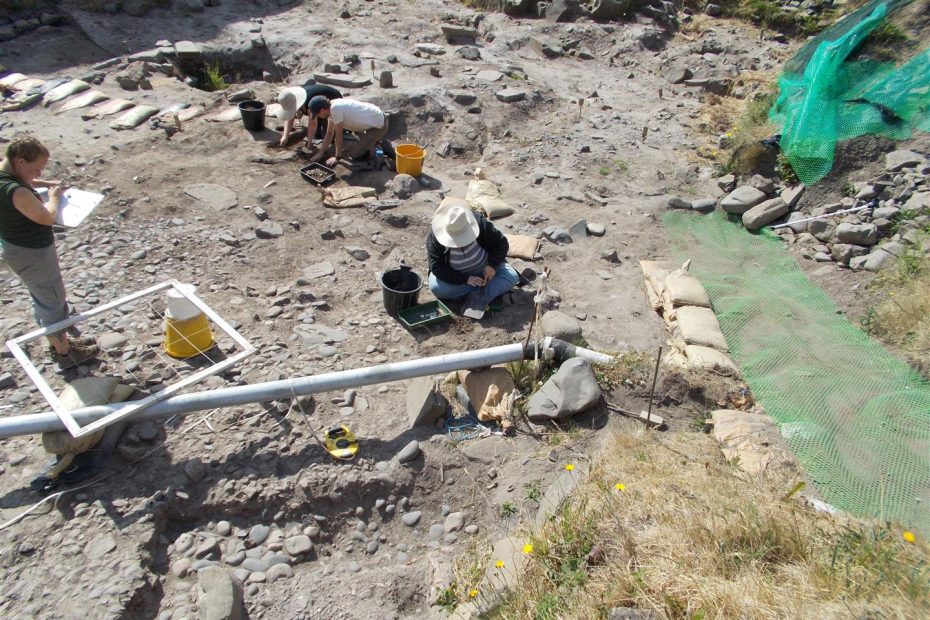by Emily Stammitti-Campbell
We know that everything is accessible if only we can see ourselves as enablers of the possibility.
It was a rainy afternoon in August when I spoke to Theresa about my big plans for creating a vocational archaeology programme at the college where I was [then] working as a lecturer in employability studies. She knew my many issues with the stigmatization of our students: FE, vocational, not university-bound, ‘disabled’, vulnerable, poor, difficult… The list went on and on and to a great extent, none of those adjectives should have been applied or considered rationale for treating our students any differently from those at the best sixth form in Kent. Nevertheless, Theresa and I both lamented about how we’d heard it all before: those types of students couldn’t do archaeology. – We both knew this was NONSENSE! .

We both knew the extreme benefits of archaeology and heritage involvement on the mental health of participants, and we had both worked extensively with a range of individuals from those types of backgrounds, knew that nothing could or should hold a person back from engaging with the material past. And so the phone call jumped from one idea to the next, one method of enabling students to the next as I scrambled to take notes. I was nervous about the idea of creating such a programme and grateful that the college was giving me the chance to create this pilot – and was so relieved I had Theresa on board to help me through the pinch points. Her advice would be invaluable, especially since I didn’t yet know which students would be involved that year. I had no idea that it would be the last time I spoke to her about the programme.
Eighteen months later and so many lessons learned. The students were a dynamic group of 16 employability students, aged 16-19, interested in gaining a range of functional and transferable skills. Over the course of 6-months of face-to-face delivery, we covered the basics of stratigraphy, survey, artefact analysis, landscape archaeology and excavation techniques. Class engagement needed to be snappy, memorable and active for students to maintain interest, complete with coprolite analysis and underwater shipwreck survey – no decompression sicknesses to worry about from the comfort of a classroom. Individually, students represented a range of backgrounds, from full-time wheelchair users to students with hidden dis/abilities. Most prominent was the level of anxiety amongst all participants; the idea that they shouldn’t be the ones doing archaeology and what might happen if they broke ‘it’.

Coprolite analysis, Vikings not included 
No access to the water? No wories. Let’s map this shipwreck. 
Trowels at the ready 
Inclusive team building activities with rope and a first aid pack

We were fortunate: several archaeology companies in our locale were happy to host us on their sites and so students were exposed to Roman and Iron Age archaeology. The Kent Archaeology Society and the Kent County Council offered us additional opportunities to come and dig, allowing us access to World War II anti-aircraft batteries. Adjustments were made to allow access to sites, from trenches with ramps and additional boards put out for safety, to extra car journeys when terrain would be difficult. Some students opted to remain and assist with post-ex, while others were keen to get into the mud – and who could blame them?! The most important part is that through every step of the programme, students had choice. They had agency. They were asked what worked best for them, how they could be supported, what barriers they felt like they faced. I was on hand to mentor and facilitate, but never ‘direct’. Students were never barred from ‘that activity’ for the sake of it being inaccessible. We know that everything is accessible if only we can see ourselves as enablers of the possibility.
The year’s pilot programme is fading into memory now, mixed up with a year’s worth of lockdowns and remote learning, virtual reality tours and scavenger hunts, digital digs and round table discussions. There were good results for the participants: a reduction in feelings of isolation and increased confidence in their own abilities, social and physical. There were also good outcomes for the college. We now host a vocational archaeology and research group: a volunteer group for students from across the college to engage with at no cost to themselves, inclusive, and a place for anybody with an interest – great or small – in archaeology. It is largely being put on hold, thanks to Covid, but when we are again back on site, it will be up and running on a weekly basis, with an interest list from our Foundation Department (SEN), Equine Studies, Employability, A Level, Access and ESOL. We’ve had the good fortune of garnering the support of Otford Palace (the Archbishops’ Palace Conservation Trust) and the Darent Valley Landscape Partnership. When Covid allows, we will reconvene to research the Palace and reassemble pieces of a scattered archive, conduct some small-scale test-pitting projects, and perhaps provide students with the opportunity to engage with various aspects of geophysical survey, excavation and report writing. Hopefully, we can again challenge preconceived notions of enablement in archaeology and provide a place that is as inclusive, accessible and empowering as it could have been from the very start.
By the way, it’s safe to say that nobody broke anything in the pilot programme, apart from that glass ceiling that had previously kept them safely away from a discipline long reserved for an academic elite.
